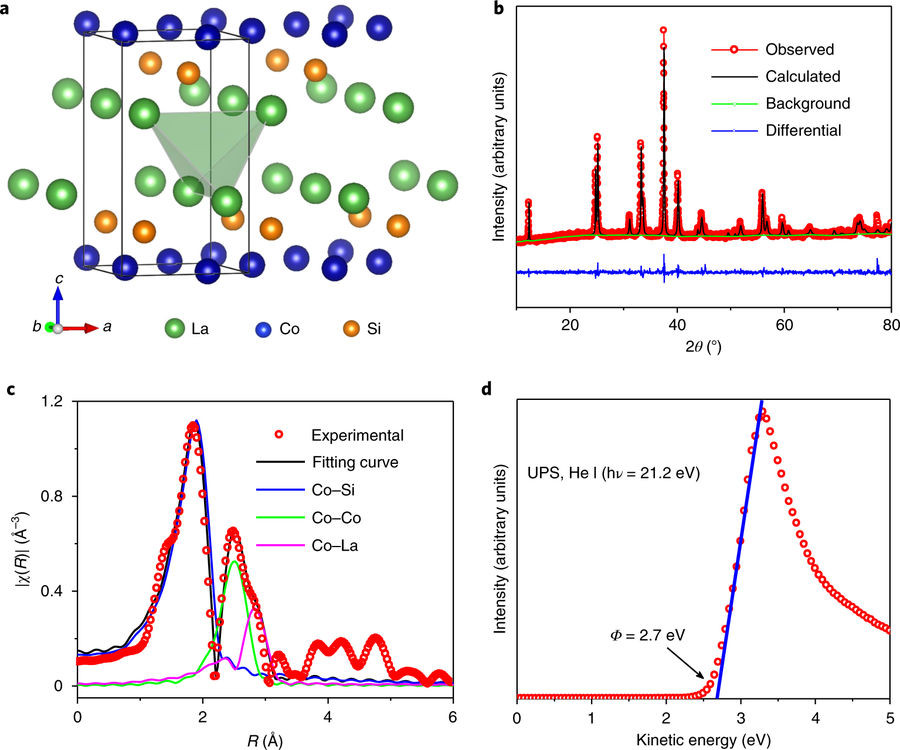Research Abstract
N2の活性化触媒としての3元系金属間化合物LaCoSi
Ternary intermetallic LaCoSi as a catalyst for N2 activation
2018年1月22日 Nature Catalysis 1 : 100 doi: 10.1038/s41929-017-0022-0

地球上に豊富に存在する金属を用いる高エネルギー多重結合の活性化は、触媒反応における最も重要な課題の1つである。今回我々は、3元系金属間化合物LaCoSiが、N2を活性化してNH3を合成するための安定な高効率触媒となることを示す。今回のアンモニア合成は、遅いN2解離からNHX形成に反応の律速段階が移ることで著しく促進される。こうした律速段階の移行が起こる触媒はごく少数である。理論計算によって、ランタンから吸着したN2への電子移動を負の電荷を持つコバルトが媒介することによって、N2解離の活性化障壁がさらに下がることが明らかになる。最も重要なのは、LaCoSiの特異的な幾何学的配置に起因してN2吸着が高い発熱効果で安定化し、N2活性化の見かけのエネルギー障壁が劇的に低下することである。結果として、LaCoSiは、温和な反応条件(400 °C, 0.1 MPa)下で担持コバルト触媒の60倍という優れた活性(1,250 μmol g−1h−1)を示す。
Corresponding Author
Activating high-energy multiple bonds using earth-abundant metals is one of the most significant challenges in catalysis. Here, we show that LaCoSi—a ternary intermetallic compound—is an efficient and stable catalyst for N2 activation to produce NH3. The ammonia synthesis is significantly promoted by shifting the reaction bottleneck from the sluggish N2 dissociation to NH x formation, which few catalysts have achieved. Theoretical calculations reveal that the negatively charged cobalt mediates electron transfer from lanthanum to the adsorbed N2, which further reduces the activation barrier of N2 dissociation. Most importantly, the specific LaCoSi geometric configuration stabilizes the N2 adsorption with a strong exothermic effect, which dramatically decreases the apparent energy barrier of N2 activation. Consequently, LaCoSi shows a superior activity (1,250 μmol g−1 h−1), with a 60-fold increase over the activity of supported cobalt catalysts under mild reaction conditions (400 °C, 0.1 MPa).

